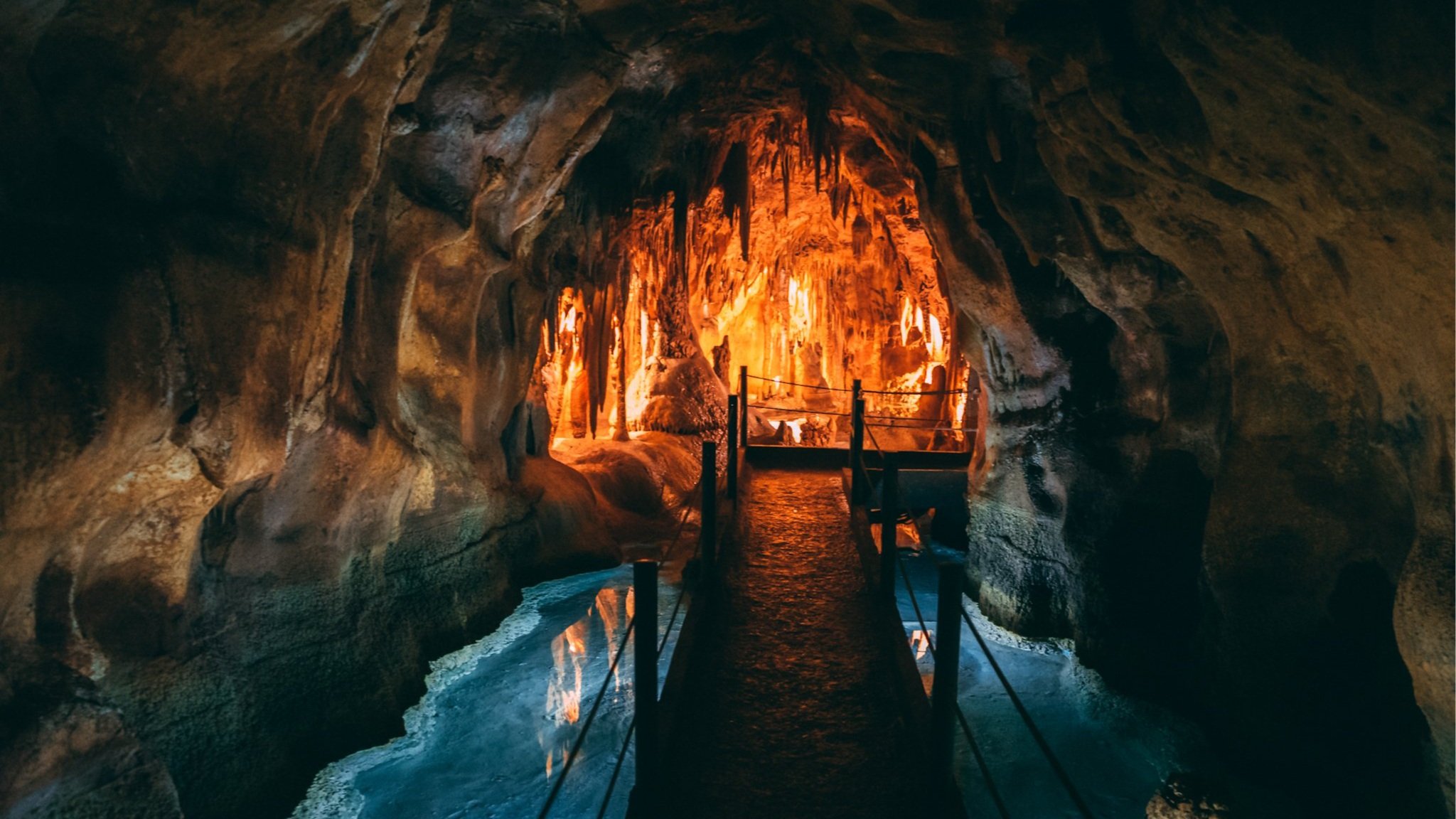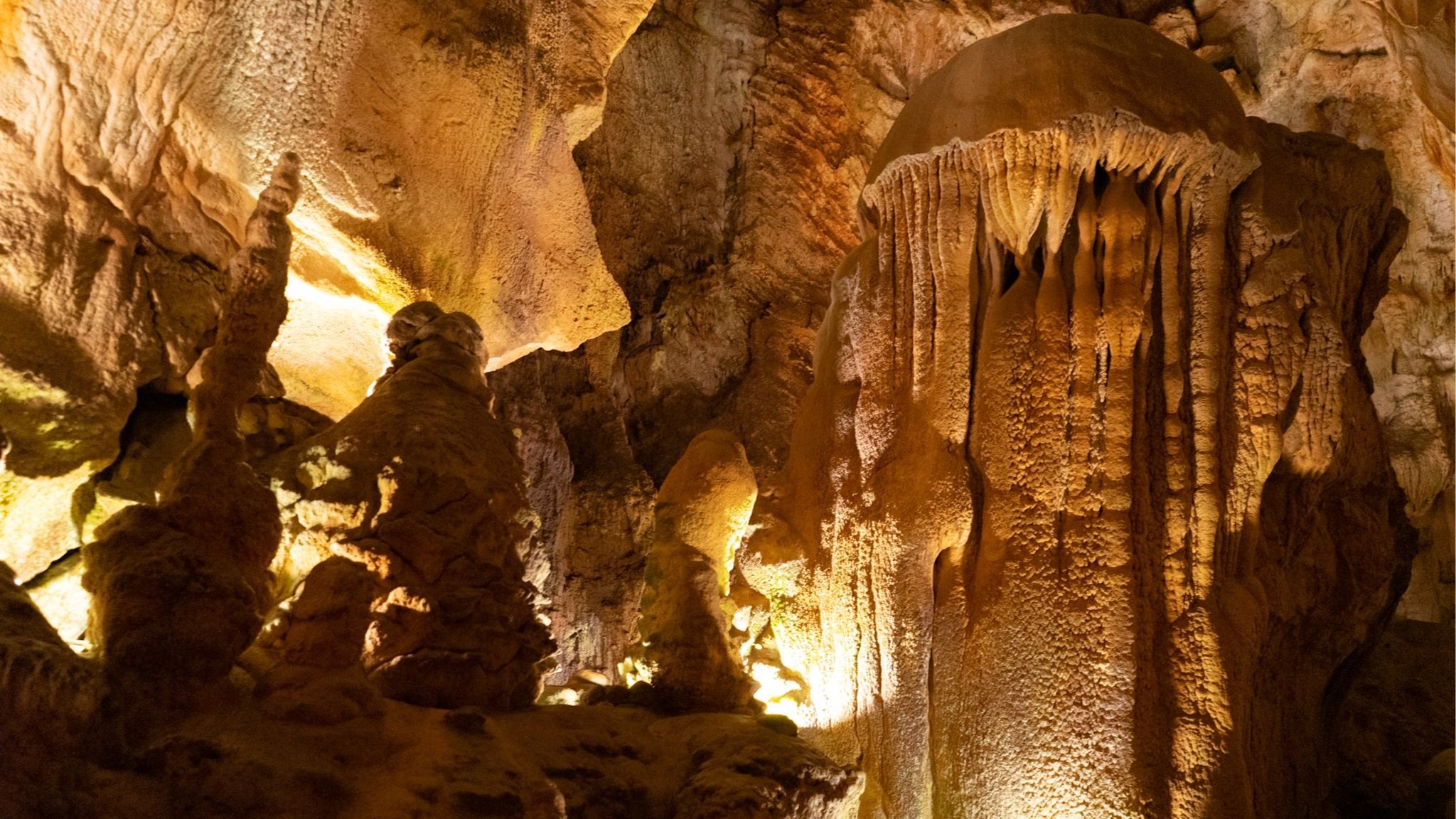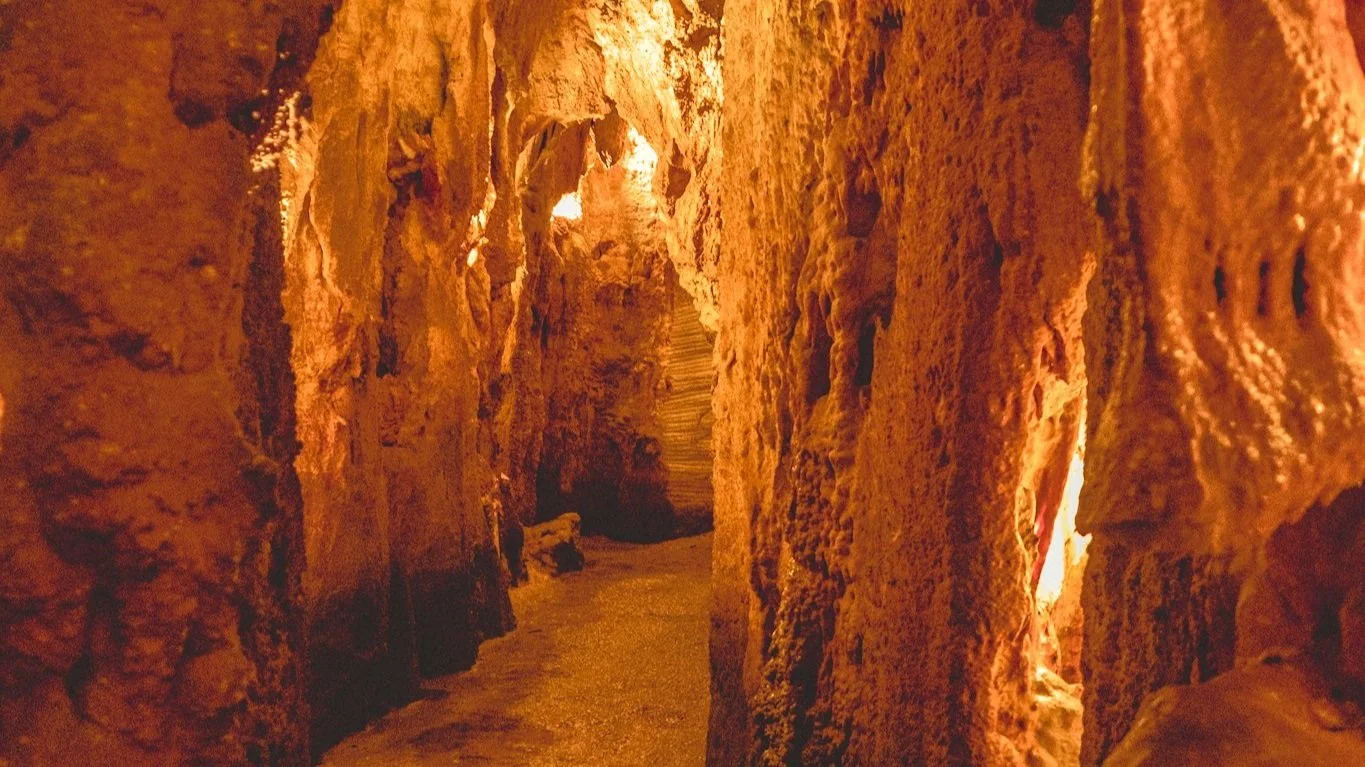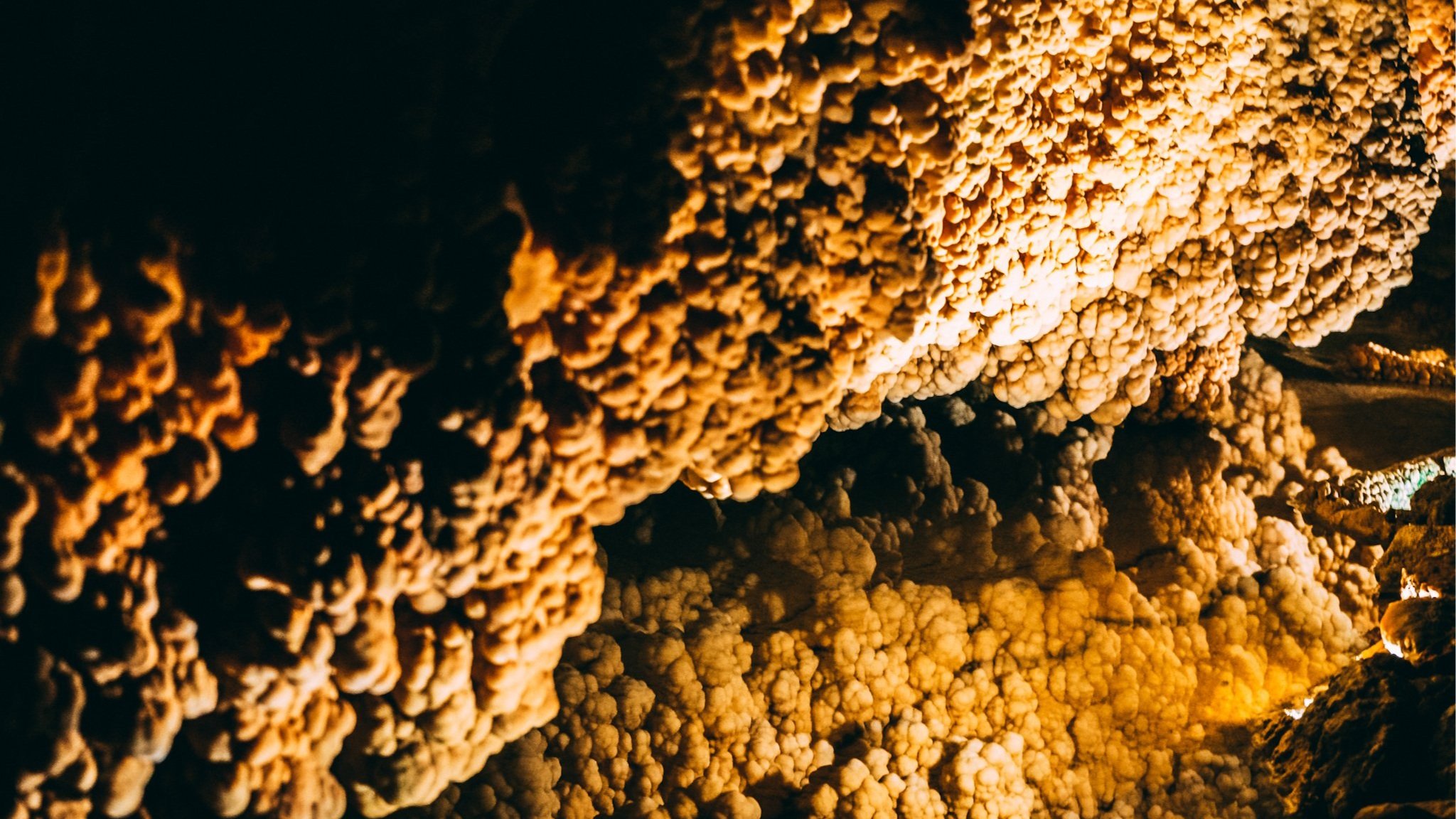Exploring the Alvados Caves
Portugal's Stunning Grutas de Alvados
Hidden beneath the rolling hills of central Portugal lies the Alvados Caves (known has Grutas de Alvados in Portuguese), a system of ancient limestone caves with a subterranean wonderland filled with stunning rock formations, crystal-clear underground lakes, and breathtaking stalactites and stalagmites. The Alvados Caves consist of two parts, traditionally known as the "old cave" and the "new cave."
The "old cave" has been known for about four hundred years and was often used by local shepherds as shelter from the weather.
The "new caves," which make up the Alvados Caves themselves, were discovered in 1964 by a group of quarry workers from the Serra dos Candeeiros. The discovery happened by chance when the group of workers wondered upon hearing the falling stones in a chasm that seemed deep from the start.
In this sense, a first descent into the caves was prepared with ropes and lanterns. Dazzled by what they found, the news of the discovery quickly spread. In the following two years, tunnels were opened, and stairs were built to allow easier exploration of the cave.
Whether you're a nature enthusiast or simply seeking a one-of-a-kind adventure, the Grutas de Alvados are a must-see destination that will leave you awestruck and inspired.
What to see in Alvados Caves
The Alvados Caves have a visitable length of 350 meters, their maximum width between rooms is about 40 meters, with an interior height reaching 95 meters, maintaining a stable temperature between 16 and 18 degrees Celsius throughout the year due to natural ventilation.
The feeling one gets is one of admiration for the work executed by nature over more than 50,000 years, and its interior route is served by indirect lighting that enhances the natural colors and transparencies of its limestone formations.
The Alvados Caves are open all year round, and their location allows for the exploration of the vast gastronomic heritage of this region, being one of the most delicate natural spaces open to tourism and one of the most characteristic caves in the Iberian Peninsula.
Visitors to the Grutas de Alvados can take a guided tour of the caves, which lasts approximately 45 minutes. During the tour, you'll be able to explore the various chambers and galleries of the caves, learning about their formation and the geological history of the area.
The Alvados Caves are very close to the Santo António Caves and are located in the Natural Park of Serras de Aire e Candeeiros, part of the limestone massif of Estremadura and integrated into a circuit of great historical and scientific value located in the central area of Portugal.
The interior of the Alvados Caves is formed by a succession of rooms and small uneven lakes with natural access from the outside, consisting of a first group of three uneven rooms whose path unfolds in the form of a natural tunnel, revealing several characteristic monumental "algares" of this region.
In the area surrounding the Alvados Caves, which are located in the Natural Park of Serras de Aire e Candeeiros in Portugal, is home to 18 species of bats.
Bats play a crucial role in the ecosystem as pollinators, seed dispersers, and insect controllers. They are nocturnal creatures, meaning they are active during the night, and they navigate using echolocation, emitting high-frequency sounds that bounce off objects and help them detect prey and navigate in the dark.
Within the cave systems, bats can often be found roosting in large numbers, hanging from the ceilings or clinging to walls. These caves provide them with shelter from predators and harsh weather conditions.
The presence of bats in the area contributes to the overall biodiversity and ecological balance of the region. However, it's essential to note that disturbances to their habitats, such as excessive noise, light pollution, or human interference, can disrupt their natural behaviors and have negative impacts on their populations.
Conservation efforts aimed at protecting bat habitats and raising awareness about their importance are crucial for ensuring the continued survival of these fascinating creatures in the Alvados Caves and surrounding areas.
One of the highlights of the Grutas de Alvados is the Cathedral, a large chamber that is home to some of the most impressive rock formations in the caves. The Cathedral is also used as a venue for concerts and events, providing a unique and unforgettable setting for any occasion.
Its linear path between the first three rooms unexpectedly leads to a large central room that unfolds into successive rooms and small natural lakes, where the perfect harmony of the numerous "stalactites" and "stalagmites" is highlighted by lighting suitable for the preservation of their natural beauty.
The Alvados Caves form one of the most beautiful and remarkable sets of natural caves open to the public in Portugal, which alone justifies a visit to this stunning and delicate natural scenery.
Within a 50 km radius, there are several tourist destinations such as the castles of Leiria, Óbidos, Porto de Mós, Santarém, Torres Novas, Almourol, or Ourém, and besides the Monastery of Batalha and the convents of Alcobaça or Tomar, the Sanctuary of Fátima stands out as a unique religious worship site in the world context.
With it’s stunning natural beauty and unique underground setting, Alvados Caves are a must-see destination for anyone visiting Alcobaça or Leiria region in Portugal.
Tours near Grutas de Alvados
Disclosure: Some of the links in this post may be affiliate links. This means that if you click on the link and make a purchase, we may receive a small commission at no extra cost to you. This helps us continue to provide valuable content and recommendations for our readers. Thank you for your support!






